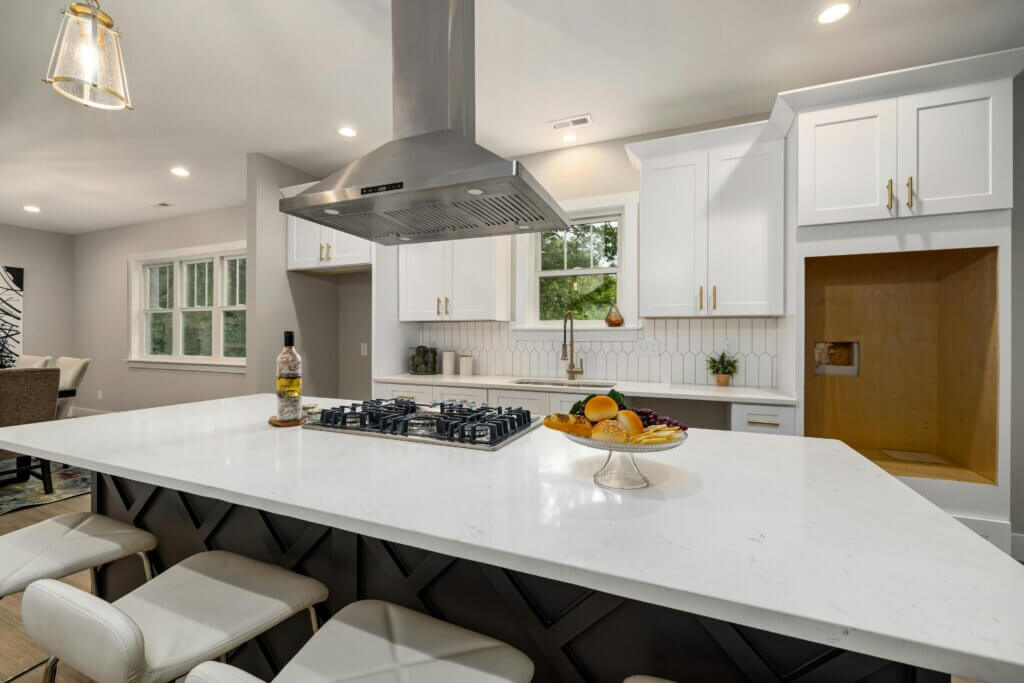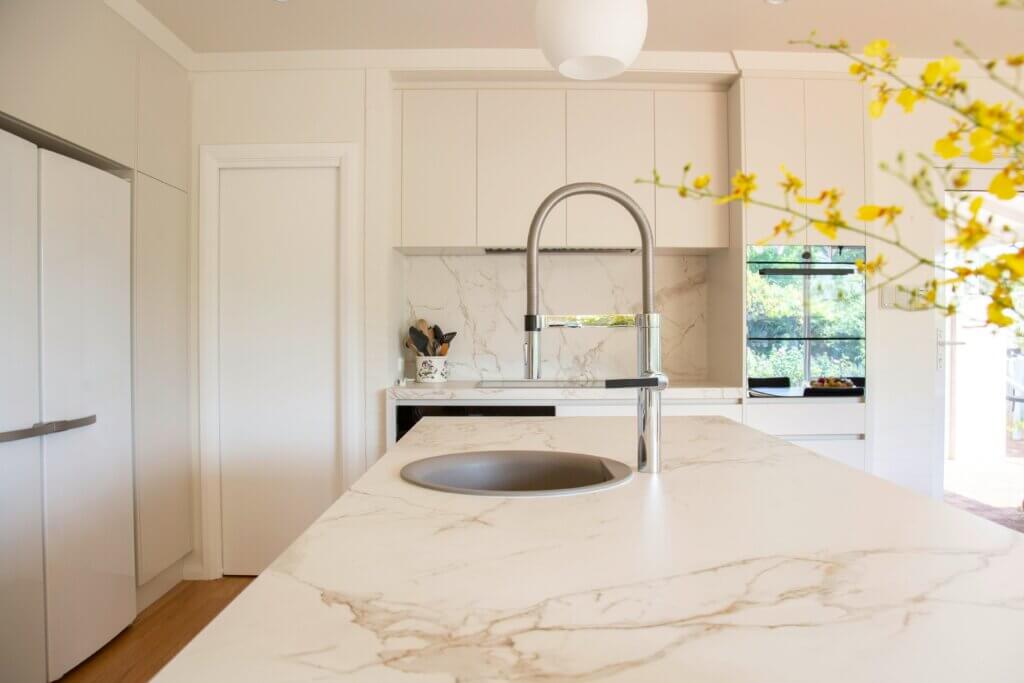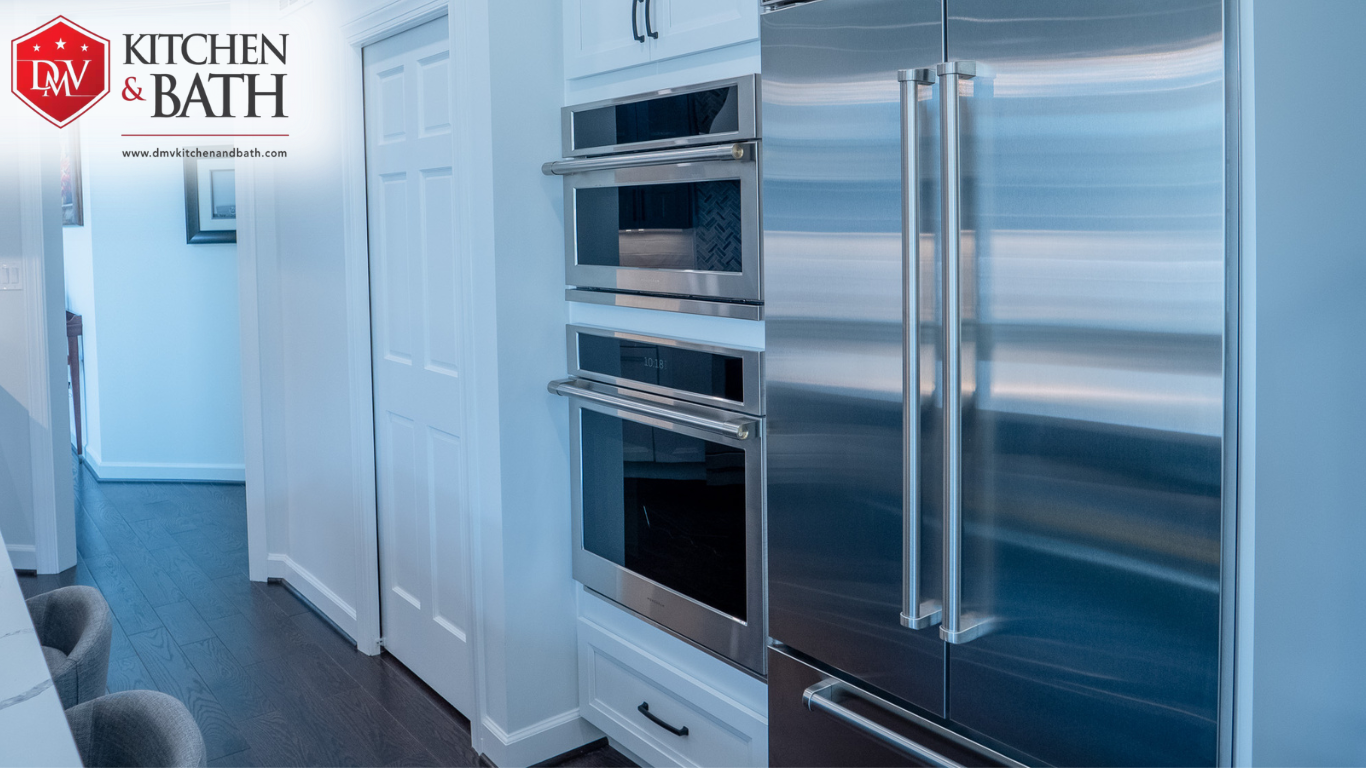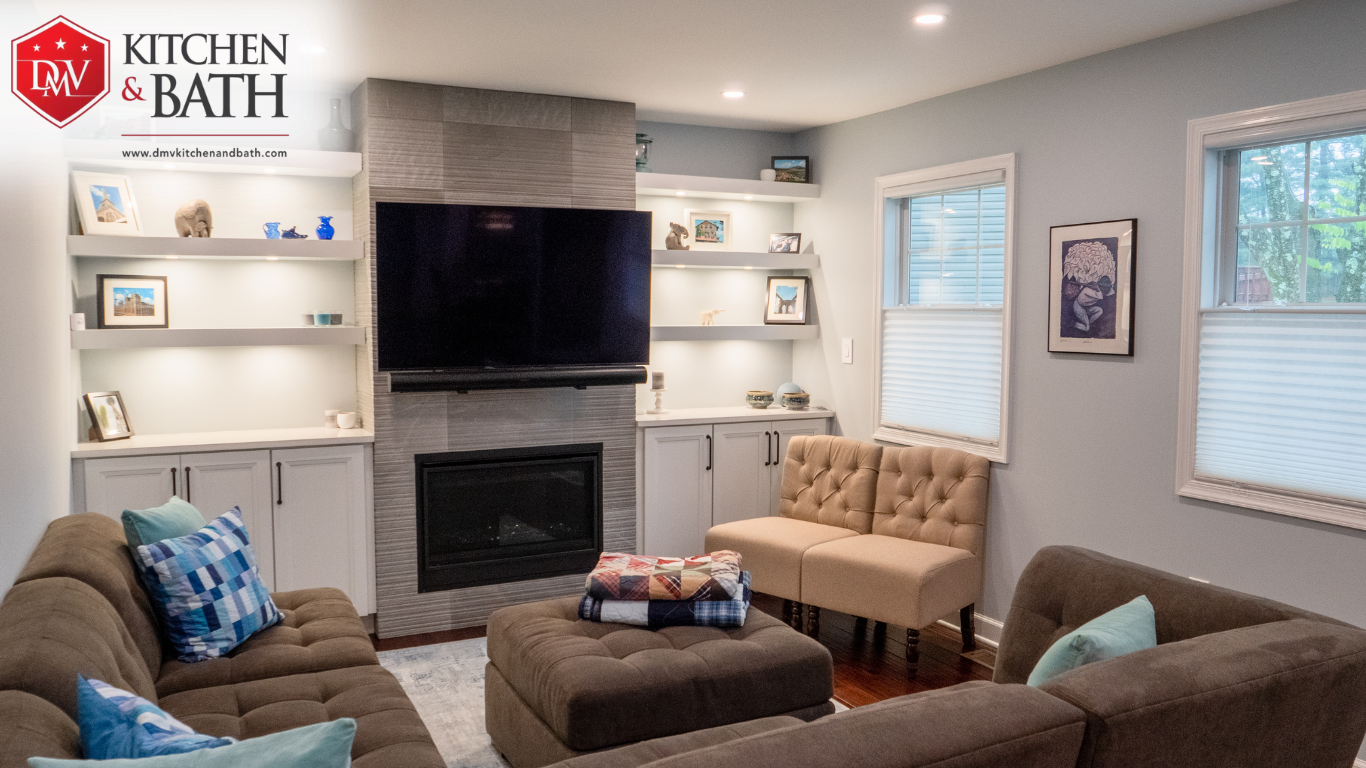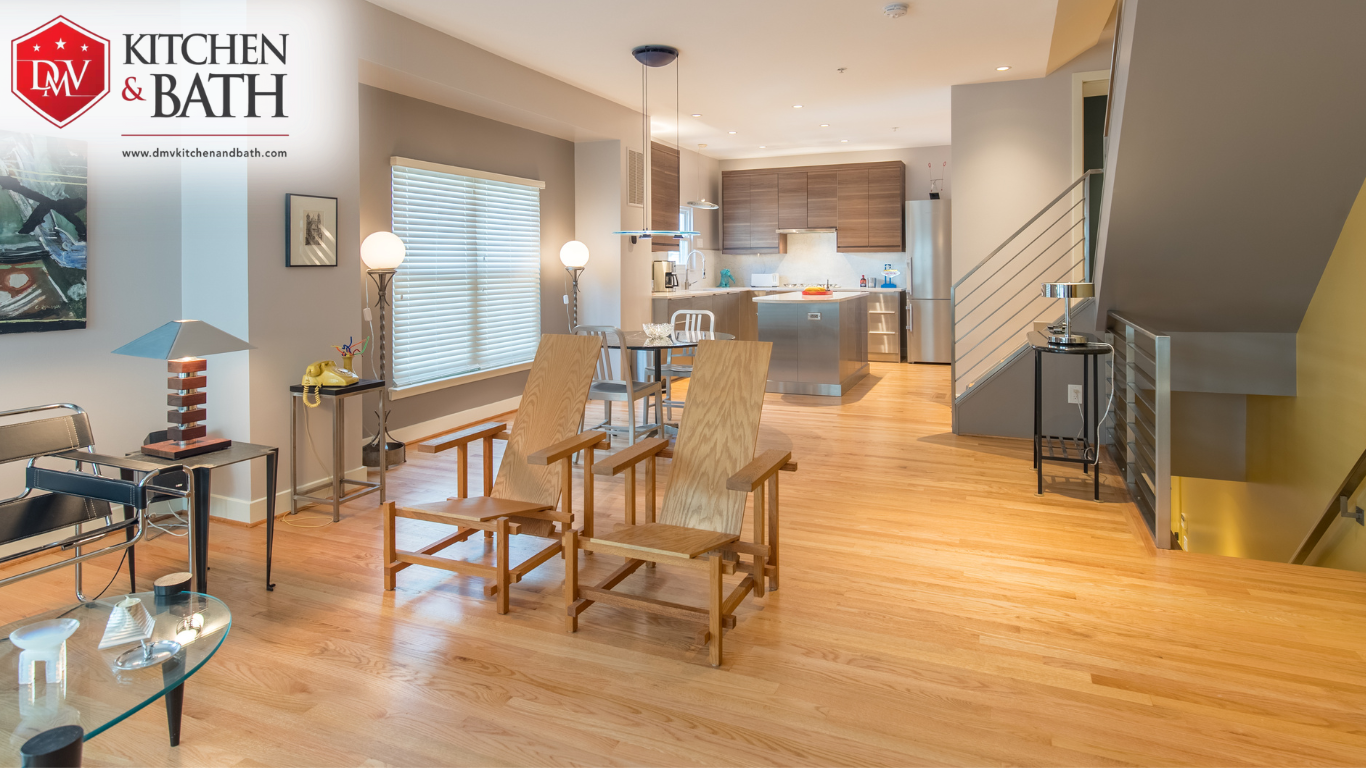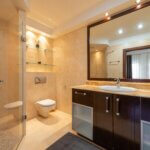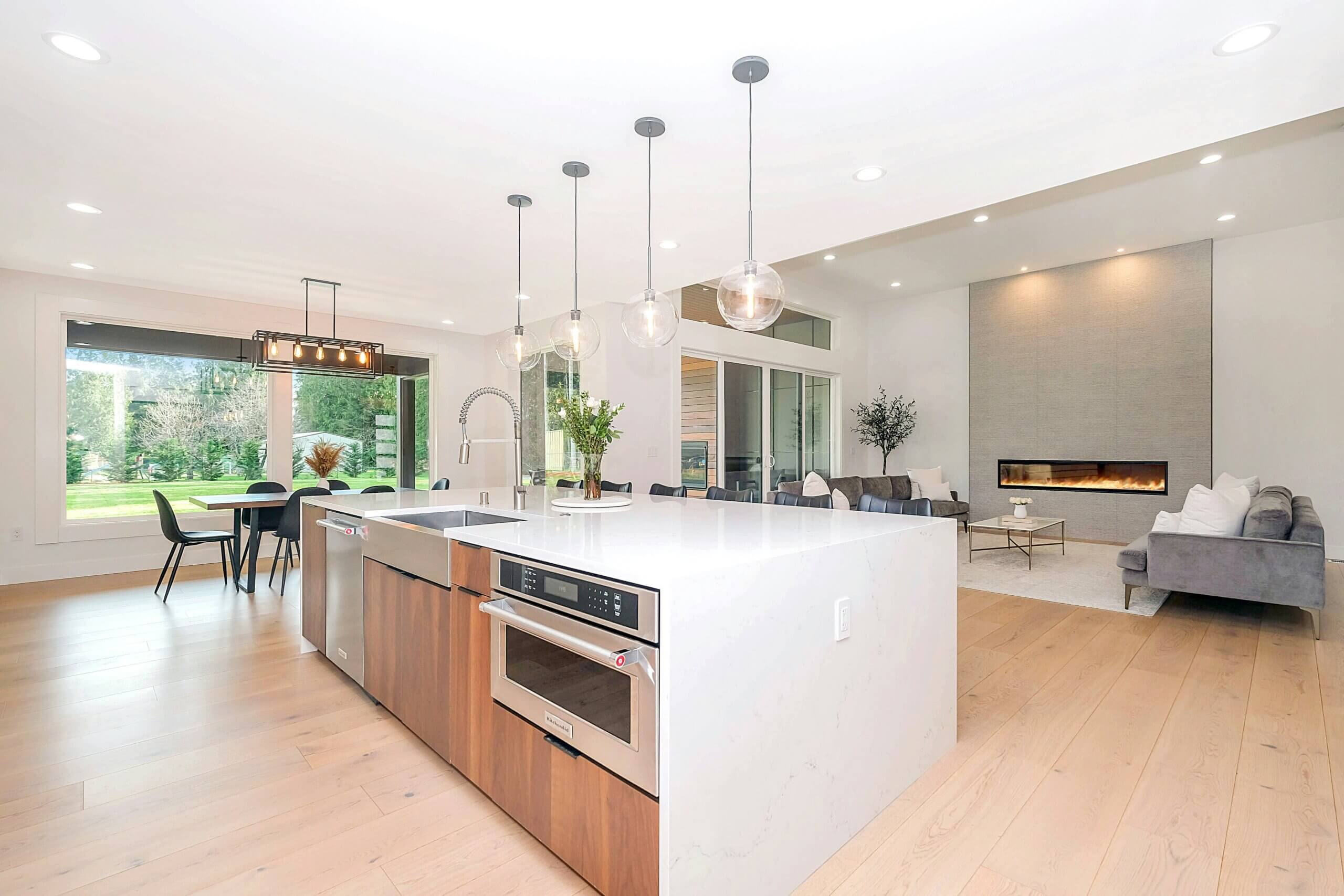
7 Easy Ways to Make Your Kitchen Remodel More Energy-Efficient9 min read
Remodeling your kitchen is like orchestrating a symphony of design, functionality, and personal taste. But what if I told you that amidst the excitement of the ideas and choosing cabinets, countertops, and colors, in reality, there’s an entirely different tune waiting to be composed—one that harmonizes with the environment and your wallet?
Welcome to the world of energy-efficient kitchen remodeling, a work area where sustainability meets style and budget becomes savings. It’s a realm where every decision, from the type of lightbulbs you choose to the placement of your refrigerator, holds the power to reduce your carbon footprint and trim your utility bills.
So, before you dive headfirst into the whirlwind of kitchen renovation, let’s embark on a journey—a journey that will not only transform the physical space of your kitchen but also the way you perceive and interact with it.
Contents
Why Invest in Energy-efficient Kitchen Remodeling
Investing in energy-efficient kitchen remodeling isn’t just about following a modern kitchen trend or keeping up with the Joneses—it’s a key strategic decision with tangible benefits for both you and the planet. Here’s why it’s worth considering.
Long-term Cost Savings
While energy-efficient appliances and materials may have a higher upfront cost, they often pay for themselves over time through reduced energy bills. Imagine the savings accrued month after month as your energy-efficient refrigerator, dishwasher, and lighting fixtures sip electricity instead of guzzling it.
Environmental Impact
By reducing your kitchen’s energy consumption, you’re also reducing your carbon footprint. Energy-efficient appliances and features help conserve natural resources, decrease greenhouse gas emissions, and mitigate climate change. It’s a small but meaningful step towards creating a more sustainable future for generations to come.
Enhanced Home Value
Energy-efficient upgrades can significantly enhance the resale value of your home. With growing awareness and demand for eco-friendly features among homebuyers, an energy-efficient kitchen can make your property more attractive and competitive in the real estate market.
Regulatory Incentives
Depending on where you live, there may be government incentives, rebates, or tax credits available for energy-efficient home improvements. These incentives can help offset the initial cost of remodeling and provide homeowners with additional financial motivation to invest in energy-efficiency projects.
Energy-Efficient Appliances
Energy-efficient appliances are designed to operate more efficiently, using less electricity or gas to perform the same tasks as their conventional counterparts. This means lower energy bills for you and reduced strain on the environment.
Look for appliances that bear the ENERGY STAR label. This certification indicates that the appliance meets or exceeds strict energy efficiency guidelines set by the U.S. Environmental Protection Agency (EPA). ENERGY STAR appliances are independently certified to deliver superior energy performance without sacrificing features or performance.
These appliances, such as refrigerators, dishwashers, cooktops, and microwaves, are designed to use less energy while maintaining high performance. Features to consider include adjustable temperature controls, soil sensors, induction technology, convection cooking, inverter technology, and variable-speed fans.
LED Lighting
LED lighting is another crucial aspect of energy-efficient, kitchen design and kitchen remodeling services. LED bulbs are highly energy-efficient, consuming up to 80% less energy than traditional incandescent bulbs. By replacing outdated lighting fixtures with LED equivalents, you can significantly reduce your kitchen’s energy consumption and lower electricity bills.
LED strips can be installed under cabinets, along toe kicks, or in recessed fixtures to provide task lighting, accent lighting, or ambient illumination, enhancing both aesthetics and functionality in the kitchen.
Many LED fixtures and bulbs are dimmable, allowing you to adjust the brightness levels according to your needs and preferences. This flexibility not only adds ambiance to the kitchen but also helps conserve energy by reducing kitchen lighting intensity when full brightness is unnecessary.
Energy-Efficient Windows
Energy-efficient windows are designed with advanced insulation materials and multiple panes of glass to minimize heat transfer between the interior and exterior of your home. This helps maintain a more consistent indoor temperature, reducing the need for heating and cooling, and ultimately lowering energy bills.
Many energy-efficient windows feature low-emissivity (low-E) coatings on the glass surfaces. These coatings are designed to reflect infrared light while allowing visible light to pass through, resulting in improved thermal performance. Low-E coatings help keep your kitchen cooler in the summer and warmer in the winter by minimizing heat transfer through the windows.
Some energy-efficient windows are filled with inert gases like argon or krypton between the glass panes. These gases provide additional insulation and reduce heat conduction, further enhancing the windows’ energy efficiency.
Proper Insulation
Effective insulation helps minimize heat transfer between the interior and exterior of your home, reducing the workload on your heating and cooling systems. This results in lower energy consumption and decreased utility bills, making your kitchen more cost-effective to operate.
Well-insulated walls, floors, and ceilings help maintain a consistent indoor temperature, eliminating cold spots in the winter and hot spots in the summer. This creates a more comfortable and enjoyable kitchen environment for cooking, dining, and entertaining family, year-round.
Proper insulation also helps prevent moisture buildup inside walls and ceilings, reducing the risk of mold growth, rot, and structural damage. By maintaining optimal humidity levels, insulation promotes a healthier indoor environment and protects your kitchen and bath remodeling, from moisture-related issues.
High-Efficiency HVAC System
High-efficiency HVAC systems are designed to consume less energy while providing the same level of heating and cooling comfort as standard systems. They achieve this through advanced technologies such as variable-speed motors, high-efficiency compressors, and enhanced insulation. By reducing energy consumption, these systems help lower utility bills and save money over time.
Many high-efficiency HVAC systems come equipped with advanced features such as programmable thermostats, zone controls, and smart technology. These features allow you to customize your heating and cooling settings based on your schedule, budget, and preferences, optimizing energy usage and maximizing comfort.
Here are some examples:
Variable-Speed Heat Pumps
These systems adjust compressor and fan speeds for precise temperature control and energy savings.
High-Efficiency Air Conditioners
Utilizing advanced technologies, they provide efficient cooling while minimizing energy consumption.
Geothermal Heat Pumps
By harnessing the earth’s constant temperature, they achieve high energy efficiency and significant long-term savings.
Ductless Mini-Split Systems
These systems, without ductwork, offer efficient heating and cooling for individual zones or rooms.
High-Efficiency Furnaces
They use advanced burner technology to extract more heat from combustion gases, reducing heating costs.
Hybrid Heat Pump Systems
Combining a heat pump with a gas furnace, they optimize energy usage and comfort year-round.
Energy-Efficient Ventilation
Proper ventilation helps remove pollutants, odors, and airborne contaminants from your kitchen, promoting a healthier indoor environment for you and your family. Energy-efficient ventilation systems ensure that stale air is continuously replaced with fresh outdoor air, reducing the risk of respiratory issues and other health problems.
Efficient ventilation plays a crucial role in controlling moisture levels in your kitchen, preventing condensation, mold growth, and water damage. By exhausting humid air generated during cooking, dishwashing, and other activities, energy-efficient ventilation systems help maintain optimal humidity levels and protect your kitchen from moisture-related issues.
Ventilation systems can also help regulate indoor temperatures by removing excess heat and humidity during warmer months. By expelling hot air and promoting airflow, energy-efficient ventilation systems reduce the need for mechanical cooling, resulting in lower energy consumption and utility bills.
Here are some examples:
Energy Recovery Ventilators (ERVs)
These systems transfer heat and moisture between indoor and outdoor air streams, improving energy efficiency and maintaining indoor comfort.
Heat Recovery Ventilators (HRVs)
Similar to ERVs, HRVs transfer heat between air streams to conserve energy, particularly in colder climates.
High-Efficiency Range Hoods
Equipped with features like variable-speed fans and effective filtration, these range hoods remove cooking pollutants while minimizing energy consumption.
Demand-Controlled Ventilation (DCV) Systems
These systems adjust ventilation rates based on occupancy and air quality, optimizing energy usage without sacrificing indoor air quality.
Ductless Ventilation Systems
Suitable for localized ventilation, these systems provide energy-efficient options for kitchens or rooms where ductwork is impractical.
Low-Flow Exhaust Fans
Designed with energy-efficient motors and aerodynamic designs, these fans provide effective ventilation while minimizing energy consumption.
Programmable Ventilation Controls
These controls allow for scheduling ventilation operations based on specific needs and activity patterns, optimizing energy usage, and maintaining indoor air quality.
Water-Saving Fixtures
Water-saving fixtures, such as low-flow faucets, aerators, and efficient dishwashers, use less water while still providing adequate performance. By reducing water consumption, these fixtures help conserve precious freshwater resources and lower water bills.
Water and energy are closely linked, particularly in the context of hot water usage. Water-saving fixtures not only reduce water consumption but also decrease the energy required to heat water, resulting in additional energy savings and lower utility bills.
Many water-saving fixtures are designed with advanced technologies that optimize water usage without sacrificing performance. For example, efficient dishwashers use less water and energy per cycle while still delivering clean dishes, and low-flow faucets maintain adequate water pressure while conserving water.
Putting It Altogether
Remodeling your kitchen is not just about aesthetics; it’s an opportunity to embrace energy efficiency and reduce your carbon footprint. By incorporating energy-saving appliances, lighting, insulation, and fixtures into your remodel, you can reduce your carbon footprint and save money on utility bills. Embrace sustainable design principles to create a kitchen that aligns with your values and contributes to a greener future.
Transform your kitchen into an eco-friendly haven with our energy-efficient remodeling services!
Save money on utilities, reduce your environmental footprint, and enjoy a more comfortable living space. Contact us today to schedule your consultation or get a free estimate and take the first step towards a sustainable kitchen makeover!










